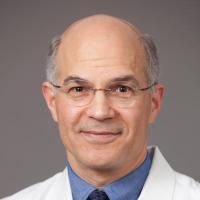Neuropeptide Y gene polymorphisms confer risk of early-onset atherosclerosis.
Date
2009-01
Editors
Journal Title
Journal ISSN
Volume Title
Repository Usage Stats
views
downloads
Citation Stats
Abstract
Neuropeptide Y (NPY) is a strong candidate gene for coronary artery disease (CAD). We have previously identified genetic linkage to familial CAD in the genomic region of NPY. We performed follow-up genetic, biostatistical, and functional analysis of NPY in early-onset CAD. In familial CAD (GENECARD, N = 420 families), we found increased microsatellite linkage to chromosome 7p14 (OSA LOD = 4.2, p = 0.004) in 97 earliest age-of-onset families. Tagged NPY SNPs demonstrated linkage to CAD of a 6-SNP block (LOD = 1.58-2.72), family-based association of this block with CAD (p = 0.02), and stronger linkage to CAD in the earliest age-of-onset families. Association of this 6-SNP block with CAD was validated in: (a) 556 non-familial early-onset CAD cases and 256 controls (OR 1.46-1.65, p = 0.01-0.05), showing stronger association in youngest cases (OR 1.84-2.20, p = 0.0004-0.09); and (b) GENECARD probands versus non-familial controls (OR 1.79-2.06, p = 0.003-0.02). A promoter SNP (rs16147) within this 6-SNP block was associated with higher plasma NPY levels (p = 0.04). To assess a causal role of NPY in atherosclerosis, we applied the NPY1-receptor-antagonist BIBP-3226 adventitially to endothelium-denuded carotid arteries of apolipoprotein E-deficient mice; treatment reduced atherosclerotic neointimal area by 50% (p = 0.03). Thus, NPY variants associate with atherosclerosis in two independent datasets (with strong age-of-onset effects) and show allele-specific expression with NPY levels, while NPY receptor antagonism reduces atherosclerosis in mice. We conclude that NPY contributes to atherosclerosis pathogenesis.
Type
Department
Description
Provenance
Subjects
Citation
Permalink
Published Version (Please cite this version)
Publication Info
Shah, SH, NJ Freedman, L Zhang, DR Crosslin, DH Stone, C Haynes, J Johnson, S Nelson, et al. (2009). Neuropeptide Y gene polymorphisms confer risk of early-onset atherosclerosis. PLoS Genet, 5(1). p. e1000318. 10.1371/journal.pgen.1000318 Retrieved from https://hdl.handle.net/10161/16064.
This is constructed from limited available data and may be imprecise. To cite this article, please review & use the official citation provided by the journal.
Collections
Scholars@Duke

Svati Hasmukh Shah

Neil J. Freedman
Our work focuses on atherosclerosis-related signal transduction and the genetic bases of atherosclerosis and vein graft failure, both in vitro and in vivo. We investigate the regulation of receptor protein tyrosine kinases by G protein-coupled receptor kinases (GRKs), and the role of GRKs and β-arrestins in atherosclerosis; molecular mechanisms of atherogenesis associated with the dual Rho-GEF kalirin, the F-actin-binding protein Drebrin, and small nucleolar RNAs (snoRNAs) of the Rpl13a locus. For in vivo modeling of atherosclerosis and neointimal hyperplasia, we use mouse carotid artery bypass grafting with either veins or arteries from gene-deleted or congenic wild type mice, as well as aortic atherosclerosis studies and bone marrow transplantation. To study receptor phosphorylation, signal transduction, and intracellular trafficking, we employ primary smooth muscle cells, endothelial cells, and macrophages derived from knockout mice, as well as cells treated with RNA interference.
Key Words: atherosclerosis, G protein-coupled receptor kinases, arrestins, desensitization, phosphorylation, receptor protein tyrosine kinases, smooth muscle cells, neointimal hyperplasia, Rho-GEF, Drebrin, snoRNAs.

Lisheng Zhang
My research efforts involves studying the pathogenesis of vein graft neointimal hyperplasia and atherosclerosis.
The greatest amount of my time in the past years has been devoted to developing and characterizing our interposition vein graft model in mice. This model allows us to use IVC to carotid artery transplants between congenic mice. These transplants allow us to ask the questions about which gene products contribute to the pathogenesis of vein graft disease. In addition, I have used carotid artery to carotid artery transplants to study the role of TNF receptors in atherosclerosis. For these studies, we have used apolipoprotein E-deficient mice as graft recipients.
By using mouse vein graft model we demonstrate that most of the neointimal cells in vein grafts originate from cellular pools outside of the vein graft at the time of its implantation. The importance of this work relates to our persistent inability to treat vein graft disease in human beings. The second work demonstrates that expression of the tumor necrosis factor receptor-1, even in just in the vein graft cells themselves, contributes to the pathogenesis of vein graft neointimal hyperplasia. In this project, I surgically created chimeric mice to demonstrate molecular mechanisms by which the tumor necrosis factor receptor-1 aggravates neointimal hyperplasia, a process that is believed to lay the foundation for accelerated atherosclerosis in vein grafts.
I have also adapted my vein graft procedure in mice to ask questions about the arterial wall’s role in atherosclerosis. This atherosclerosis model involves making carotid interposition grafts not with veins, but with the carotid artery of congenic mice, and placing them into the carotid artery of spontaneously atherogenic mice that are deficient in apolipoprotein E.
I plan to continue our studies related to the role of inflammatory cytokine receptors in neointimal hyperplasia and atherosclerosis. In addition, I envision extending this work with the surgical models I have created in mice.

Geoffrey Steven Ginsburg
Dr. Geoffrey S. Ginsburg's research interests are in the development of novel paradigms for developing and translating genomic information into medical practice and the integration of personalized medicine into health care.

Michael Hugh Sketch
My current research interests are focused in the area of diagnostic and interventional cardiac catheterization. In the arena of diagnostic cardiac catheterization, I am currently evaluating the role of Prostaglandin E1 in the prevention of contrast induced renal dysfunction. In the arena of interventional cardiac catheterization, I have been actively involved in both the development and subsequent determination of potential niches for new interventional technologies in the management of coronary artery disease. These interventional technologies include balloon angioplasty, the perfusion balloon catheter, transluminal extraction catheter, and several intracoronary stents.

Christopher Bull Granger
Research:
My primary research interest is in conduct and methodology of large randomized clinical trials in heart disease. I have led a number of large international clinical studies in heart attacks, unstable angina, heart failure, and atrial fibrillation. I have lead clinical studies of blood thinners and coronary intervention for heart attacks, stroke prevention in atrial fibrillation, and prevention of heart attack for patients with coronary artery disease. I have been co-director of the Reperfusion of Acute MI in Carolina Emergency Departments (RACE) project that is a North Carolina state-wide program to improve reperfusion care for acute myocardial infarction. I serve as the Chairman of the American Heart Association Mission: Lifeline program to improve heart attack care nationally as well as the American College of Cardiology/American Heart Association guideline committee for heart attack care. I have also studied the effects of genetic variation on heart disease. I work with the National Institute of Health and the Federal Drug Administration on evaluation of heart disease and of new drugs. I have developed tools to predict which patients are at risk for death, heart attack, and need for hospitalization.

Christopher Bang Newgard
Over its 16 year history, our laboratory has investigated mechanisms of metabolic regulation and fuel homeostasis in mammalian systems. Major projects include: 1) Mechanisms involved in regulation of insulin secretion from pancreatic islet β-cells by glucose and other metabolic fuels; 2) Development of methods for protection of β-cells against immune-mediated damage; 3) Studies on spatial organization and regulation of systems controlling hepatic glucose balance; 4) Studies on the mechanisms involved in lipid-induced impairment of insulin secretion and action in diabetes.

Simon Gray Gregory
Dr. Gregory is the Margaret Harris and David Silverman Distinguished Professor and Director of the Brain Tumor Omics Program in the Duke Department of Neurosurgery, the Vice Chair of Research in the Department of Neurology, and Director of the Molecular Genomics Core at the Duke Molecular Physiology Institute.
As a neurogenomicist, Dr. Gregory applies the experience gained from leading the sequencing of chromosome 1 for the Human Genome Project to elucidating the mechanisms underlying multi-factorial diseases using genetic, genomic, and epigenetic approaches. Dr. Gregory’s primary areas of research involve understanding the molecular processes associated with disease development and progression in brain tumors and Alzheimer’s disease, drug induced white matter injury repair in multiple sclerosis, and the characterization of lesion microenvironmental changes in MS.
He is broadly regarded across Duke as a leader in the development of novel single cell and spatial molecular technologies towards understanding the pathogenic mechanisms of disease development. Dr. Gregory is also the Section Chair of Genomics and Epigenetics at the DMPI and Director of the Duke Center of Autoimmunity and MS in the Department of Neurology.

William Erle Kraus
My training, expertise and research interests range from human integrative physiology and genetics to animal exercise models to cell culture models of skeletal muscle adaptation to mechanical stretch. I am trained clinically as an internist and preventive cardiologist, with particular expertise in preventive cardiology and cardiac rehabilitation. My research training spans molecular biology and cell culture, molecular genetics, and integrative human exercise physiology and metabolism. I practice as a preventive cardiologist with a focus on cardiometabolic risk and exercise physiology for older athletes. My research space has both a basic wet laboratory component and a human integrative physiology one.
One focus of our work is an integrative physiologic examination of exercise effects in human subjects in clinical studies of exercise training in normal individuals, in individuals at risk of disease (such as pre-diabetes and metabolic syndrome; STRRIDE), and in individuals with disease (such as coronary heart disease, congestive heart failure and cancer).
A second focus of my research group is exploration of genetic determinates of disease risk in human subjects. We conduct studies of early onset cardiovascular disease (GENECARD; CATHGEN), congestive heart failure (HF-ACTION), peripheral arterial disease (AMNESTI), and metabolic syndrome. We are exploring analytic models of predicting disease risk using established and innovative statistical methodology.
A third focus of my group’s work is to understand the cellular signaling mechanisms underlying the normal adaptive responses of skeletal muscle to physiologic stimuli, such as occur in exercise conditioning, and to understand the abnormal maladaptive responses that occur in response to pathophysiologic stimuli, such as occur in congestive heart failure, aging and prolonged exposure to microgravity.
Recently we have begun to investigate interactions of genes and lifestyle interventions on cardiometabolic outcomes. We have experience with clinical lifestyle intervention studies, particularly the contributions of genetic variants to interventions responses. We call this Lifestyle Medicopharmacogenetics.
KEY WORDS:
exercise, skeletal muscle, energy metabolism, cell signaling, gene expression, cell stretch, heart failure, aging, spaceflight, human genetics, early onset cardiovascular disease, lifestyle medicine

Elizabeth Rebecca Hauser
The incorporation of personalized medicine to all areas of human health represents a turning point for human genetics studies, a point at which the discoveries made have real implications for clinical medicine. It is important for students to gain experience in how human genetics studies are conducted and how results of those studies may be used. As a statistical geneticist and biostatistician my research interests are focused on developing and applying statistical methods to search for genes causing common human diseases. My research programs combine development and application of statistical methods for genetic studies, with a particular emphasis on understanding the joint effects of genes and environment.
These studies I work on cover diverse areas in biomedicine but are always collaborative, with the goal of bringing robust data science and statistical methods to the project. Collaborative studies include genetic and ‘omics studies of cardiovascular disease, health effects of air pollution, genetic analysis of adherence to an exercise program, genetic analysis in evaluating colon cancer risk, genetic analysis of suicide, and systems biology analysis of Gulf War Illness.
Keywords: human genetics, genetic association, gene mapping, genetic epidemiology, statistical genetics, biostatistics, cardiovascular disease, computational biology, diabetes, aging, colon cancer, colon polyps, kidney disease, Gulf War Illness, exercise behavior, suicide
Unless otherwise indicated, scholarly articles published by Duke faculty members are made available here with a CC-BY-NC (Creative Commons Attribution Non-Commercial) license, as enabled by the Duke Open Access Policy. If you wish to use the materials in ways not already permitted under CC-BY-NC, please consult the copyright owner. Other materials are made available here through the author’s grant of a non-exclusive license to make their work openly accessible.
